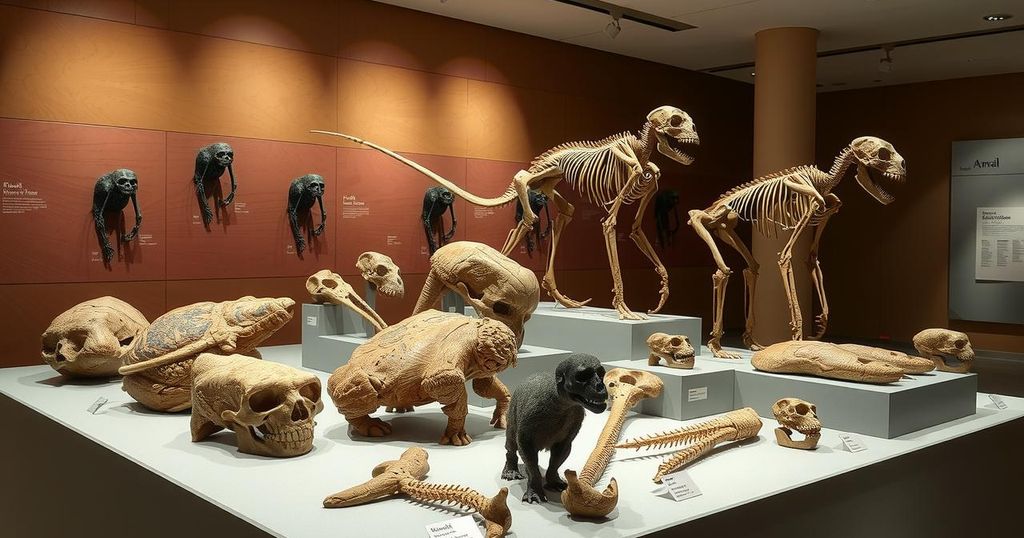Exploring Science’s Treasures: Milestones from 50, 100, and 150 Years Ago
In May 2024, a retrospective analysis unveils significant scientific milestones from 50, 100, and 150 years ago, delving into discoveries about Mercury, hydrogen’s potential, Pavlov’s conditioning experiments, hidden mountain ranges, rabies in skunks, and a deadly polypus. Each discovery offers both wonder and a glimpse into the possible dangers posed by nature or scientific advancement.
In May 2024, we take a nostalgic leap back in time to explore significant scientific discoveries made 50, 100, and 150 years ago. These milestones not only shaped our understanding of the universe but also held promising, albeit sometimes dangerous, implications for humanity’s future.
Way back in 1974, the Mariner 10 spacecraft turned the spotlight on Mercury, revealing its striking resemblance to the Moon. Its surface—an intricate mosaic of craters and serene expanses—displayed that Mercury is, interestingly, a justice-seeking sibling to Earth. Infrared data showed that while the surface density remained lower than Earth, Mercury’s core was likely denser, rich in iron, setting it apart from its luminous lunar cousin.
Fast forward a century to 1924, when scientists were wrestling with hydrogen’s atomic weight, discovering it actually measured at 1.0077 instead of 1.0. This seemingly trivial variation hinted at a colossal reservoir of energy, waiting to be harnessed. The potential was immense, unlocking the capacity to fuse hydrogen into helium. As physics often reminds us, with great power comes great caution; the process fuels both wonder and dread – life-changing energy versus the threat of violent consequences.
Also from 1924, famed physiologist Ivan Pavlov was diving deep into the mysteries of reflexes and instincts. His research ultimately demonstrated how dogs, under specific conditions, could learn to associate unrelated stimuli, like a sound, with food. Through a series of experiments, Pavlov illustrated that the reflexes can be conditioned, sparking a whole new avenue of understanding about learning and behavior – it was groundbreaking.
Then, jumping back to 1874, we find ourselves in the company of the Wheeler expedition, which made remarkable geological deductions about the mountainous landscapes hidden beneath vast desert areas in the western U.S. The expedition reported that geological formations, once flat, had been twisted into ridges. This activity led to fertile valleys, clogged with erosive detritus and obscured towering peaks, ultimately cradling the deserts we see today.
In rather unexpected findings, Reverend Horace C. Hovey, also in 1874, raised alarms about a potential new disease linked to the common skunk. He dubbed it rabies mephitica, drawing attention to alarming cases of people and animals succumbing to lethal convulsions after bites. As skunks flitted through many habitats, Hovey called for deeper investigation into this unpleasant and dangerous possibility, highlighting public health concerns.
Moreover, the Jardin d’Acclimatation in Paris made a surprising discovery one fateful day in 1874 when a medusan polypus entered their waters. Within 24 hours, it had decimated its fellow tank mates, transforming their home into a caustic environment. Astonishingly, this creature could convert regular water into vinegar. It was a stark reminder of nature’s unpredictable and often hostile interactions.
Consolidating the exploration of these past pivotal discoveries, one can observe how science constantly intertwines with humanity’s destiny. From Mercury’s mysterious core to the potential of hydrogen, the trials of Pavlov’s dogs, and the peril posed by skunks and aggressive mollusks, we glean insights that both inspire awe and caution. As we reflect, it’s clear that our understanding of science is shaped not just by the data but by the intriguing narratives that unfold.
Original Source: www.scientificamerican.com




Post Comment